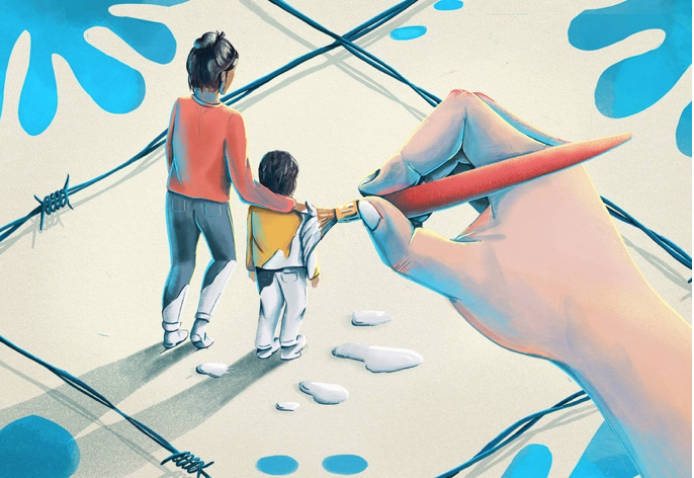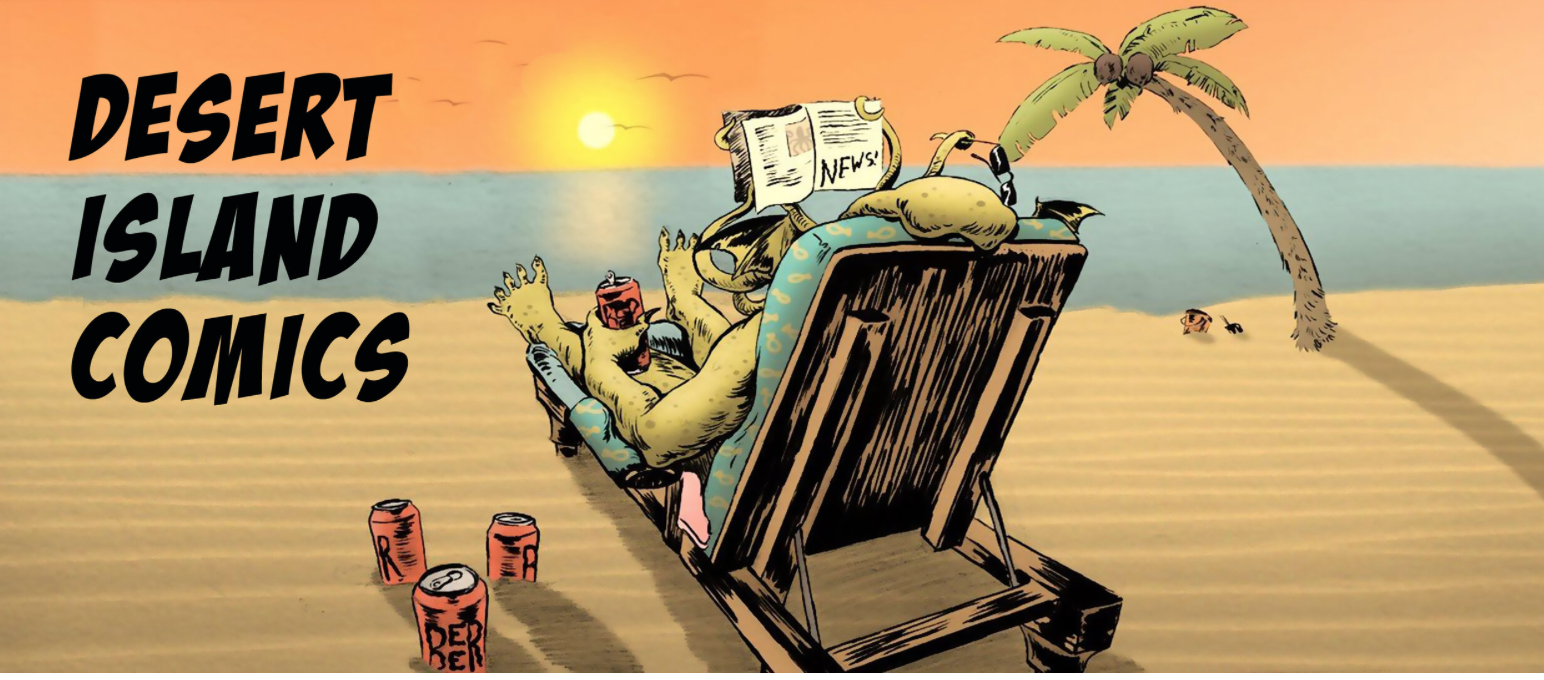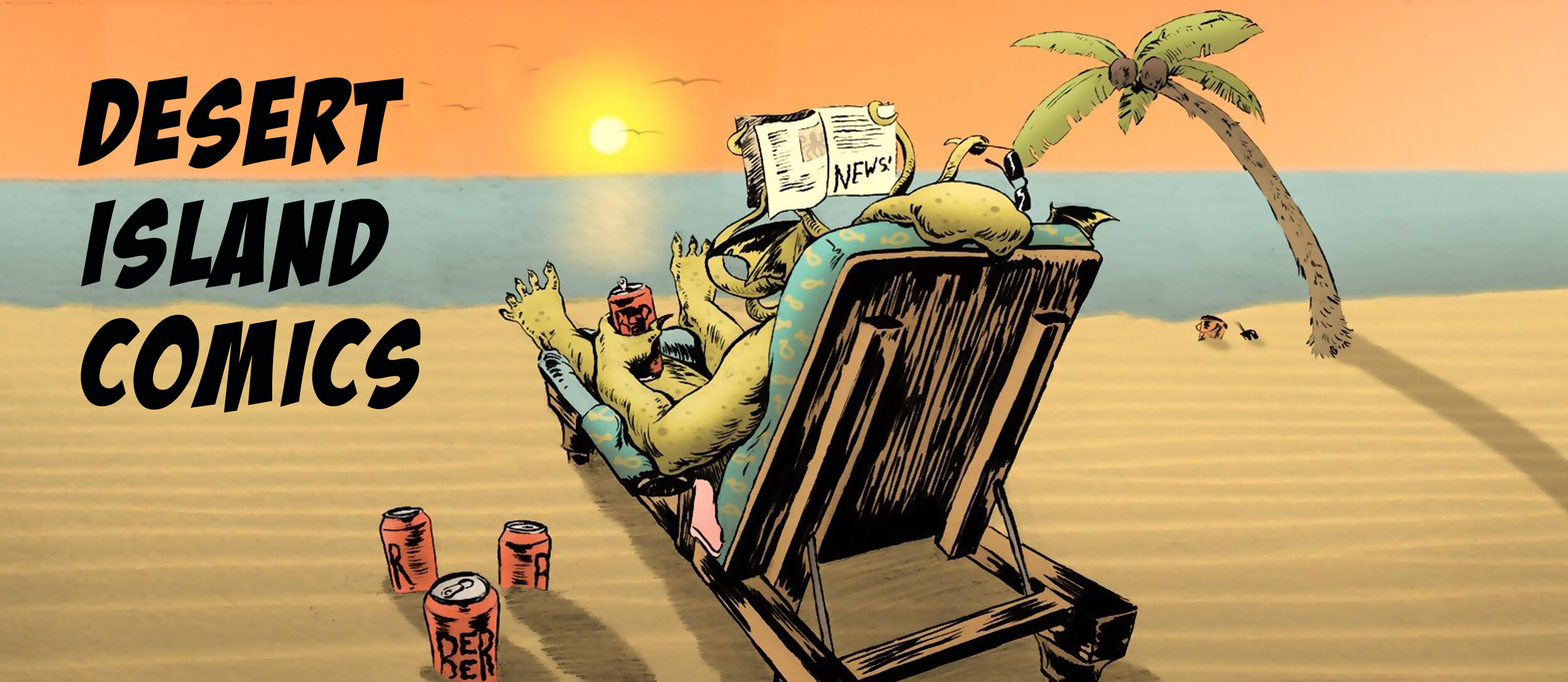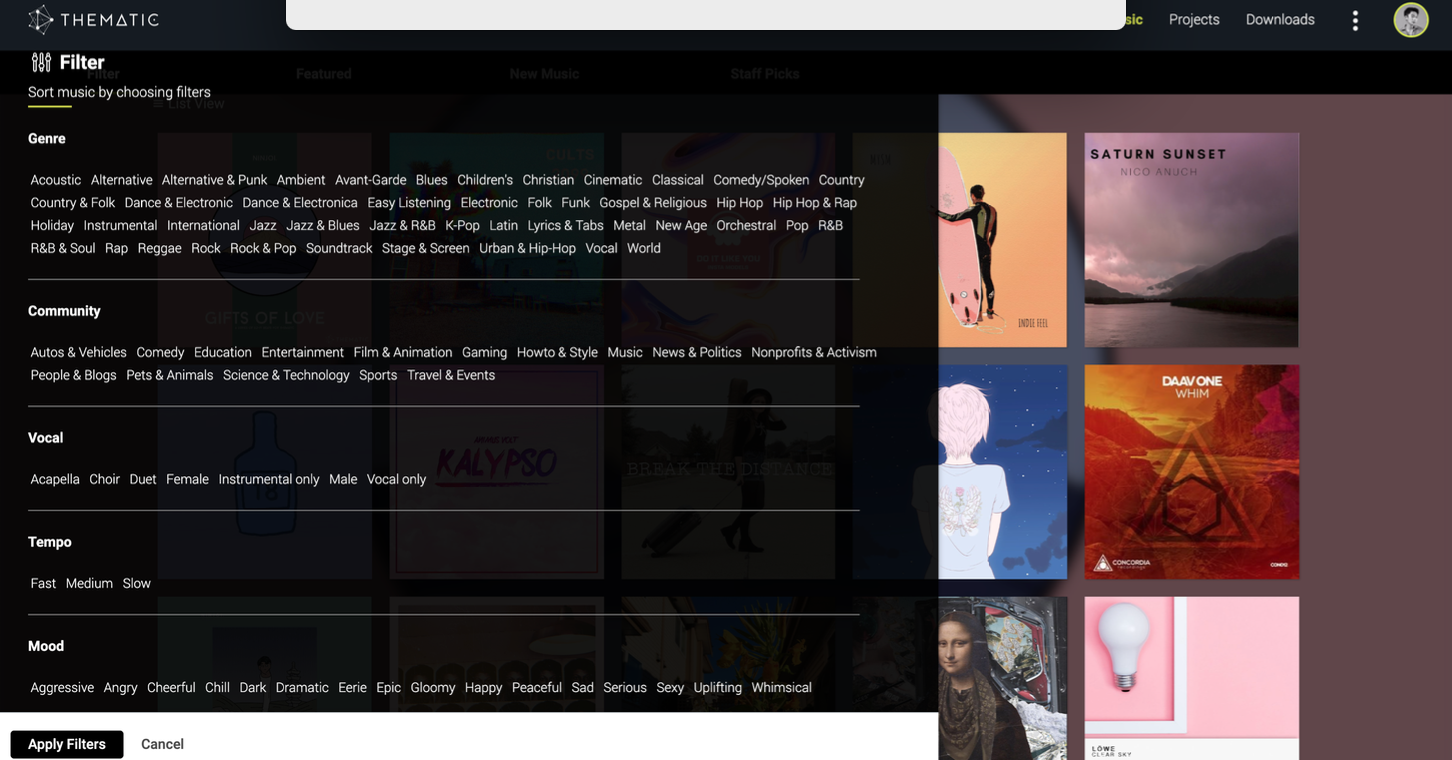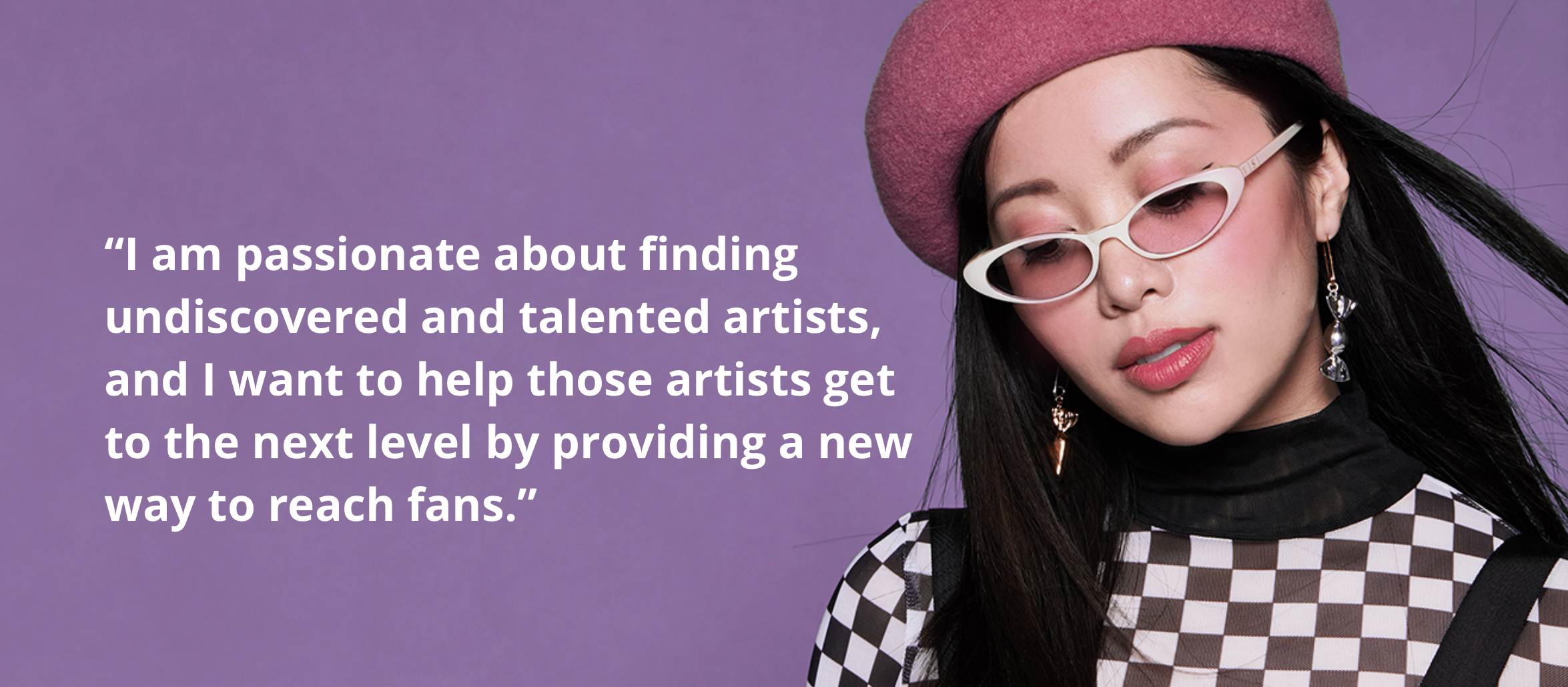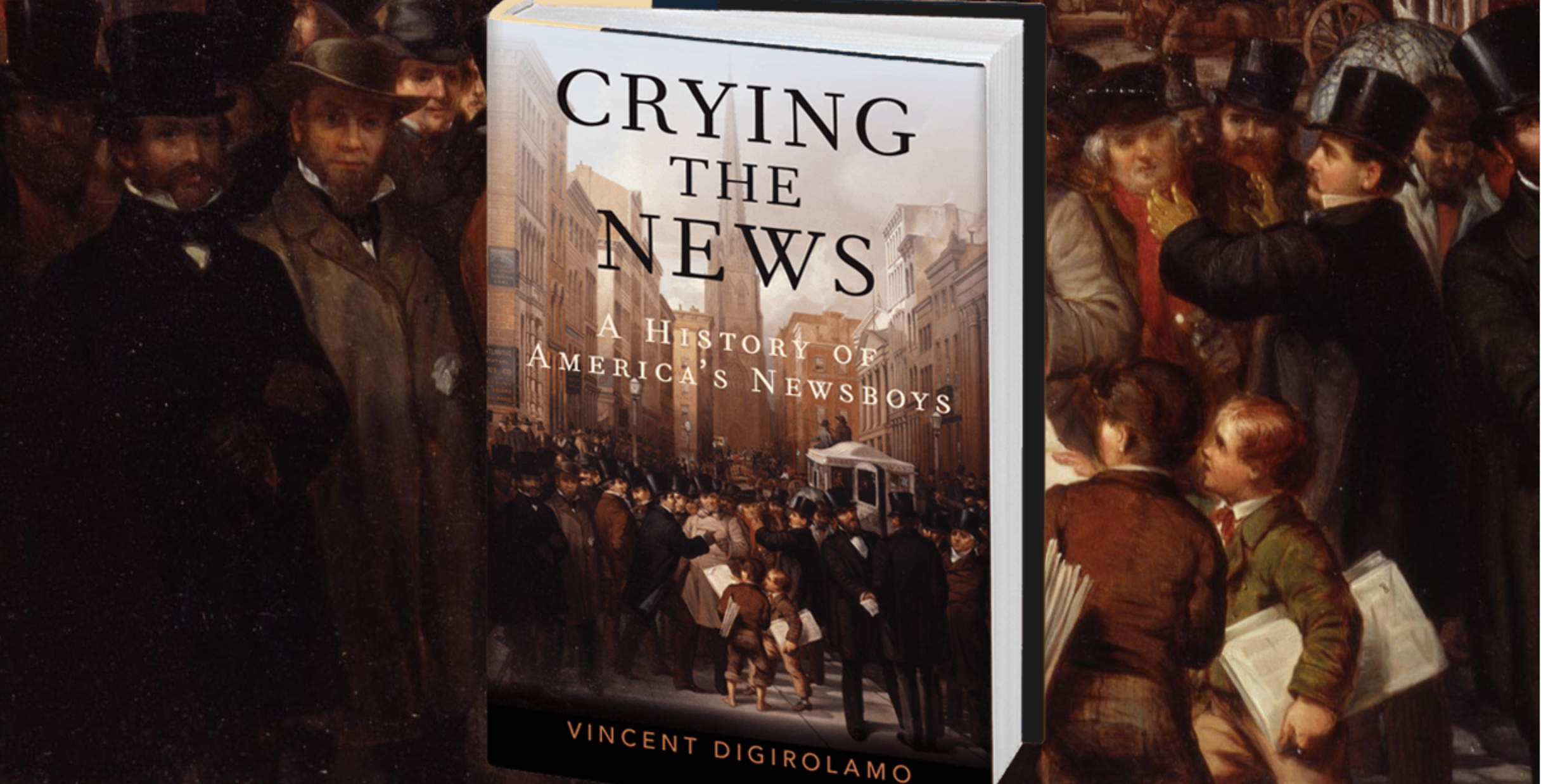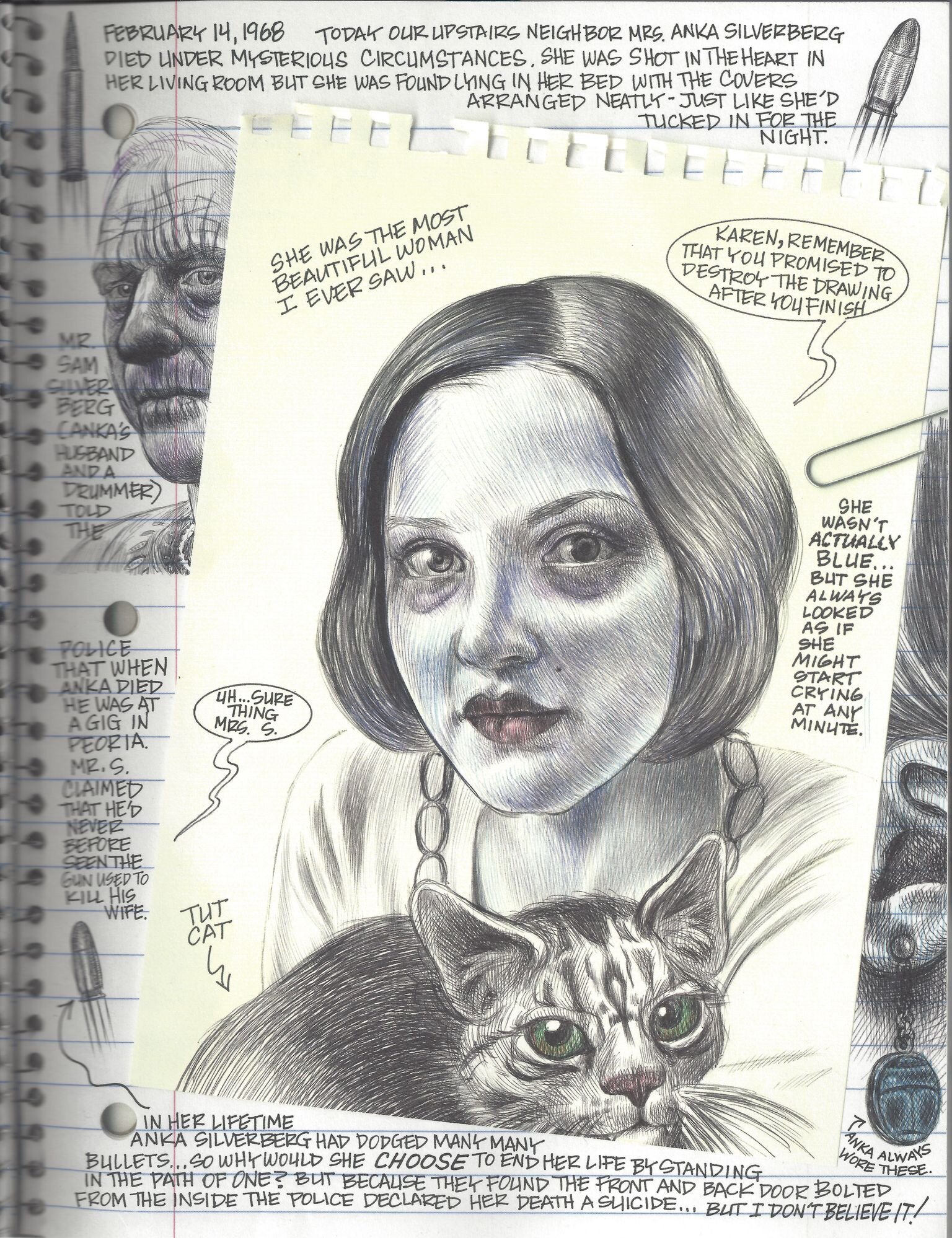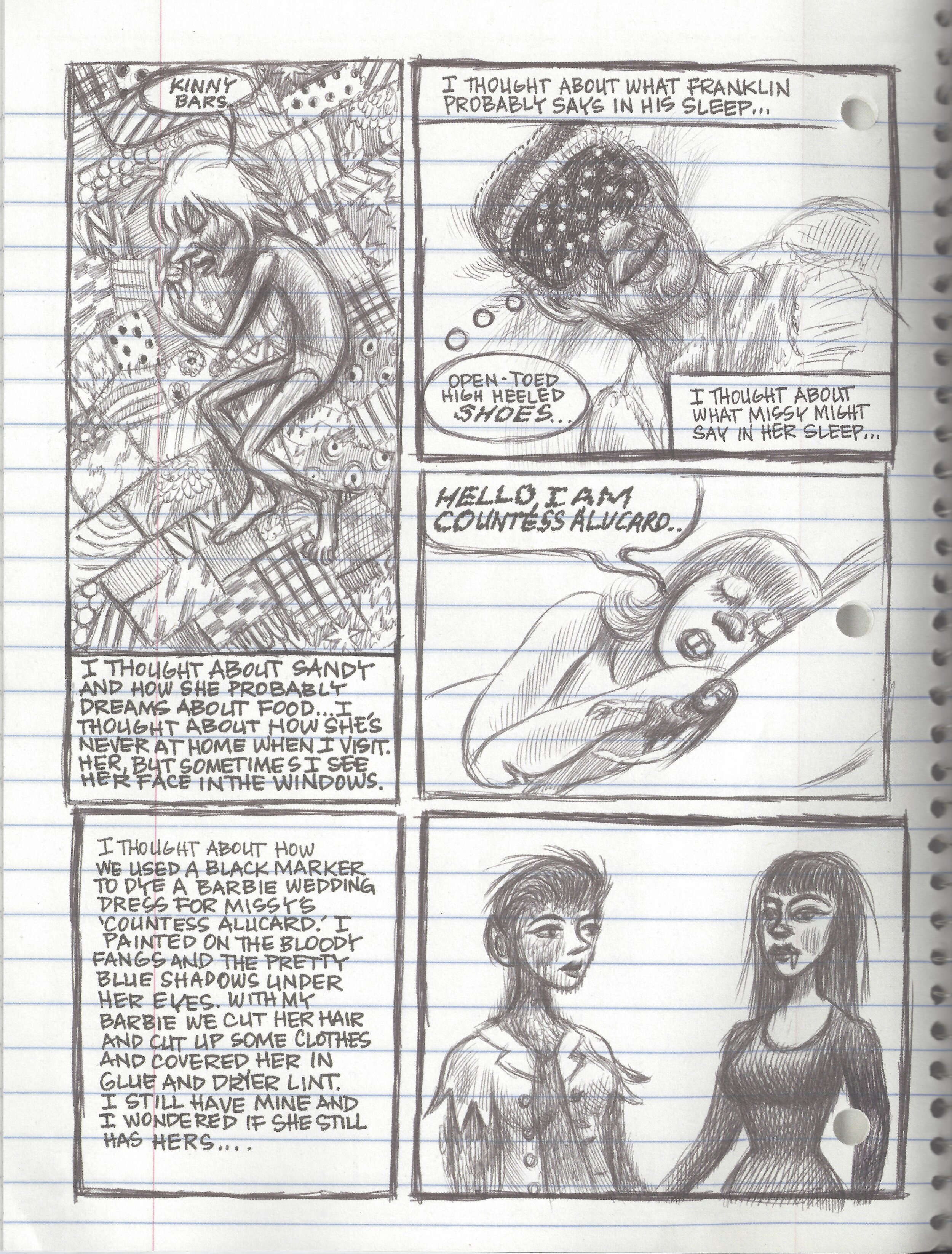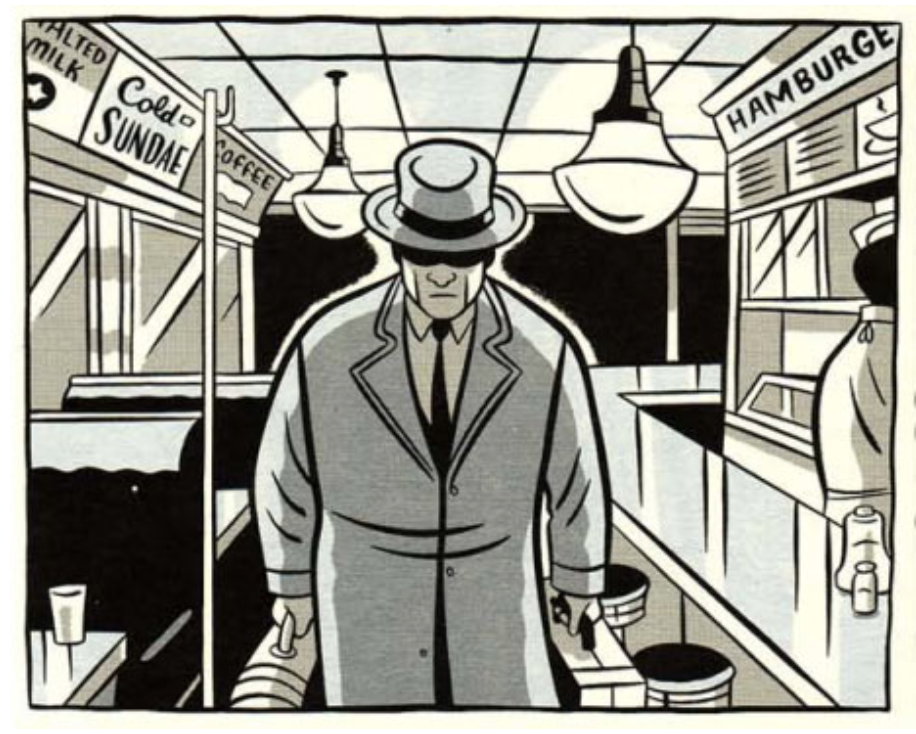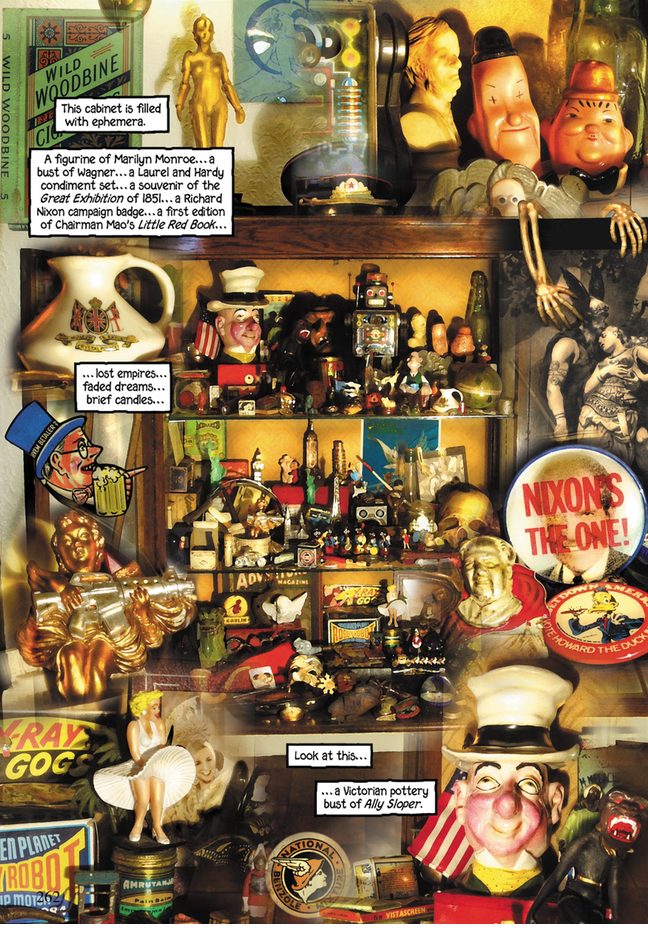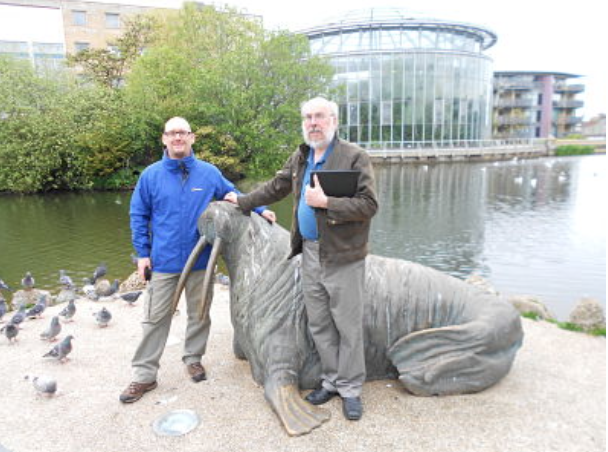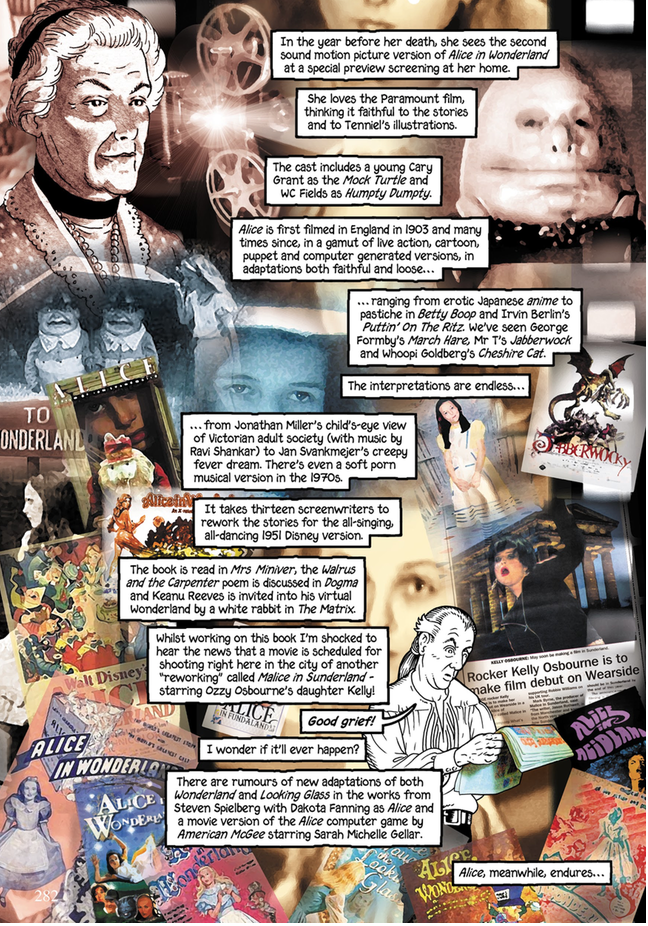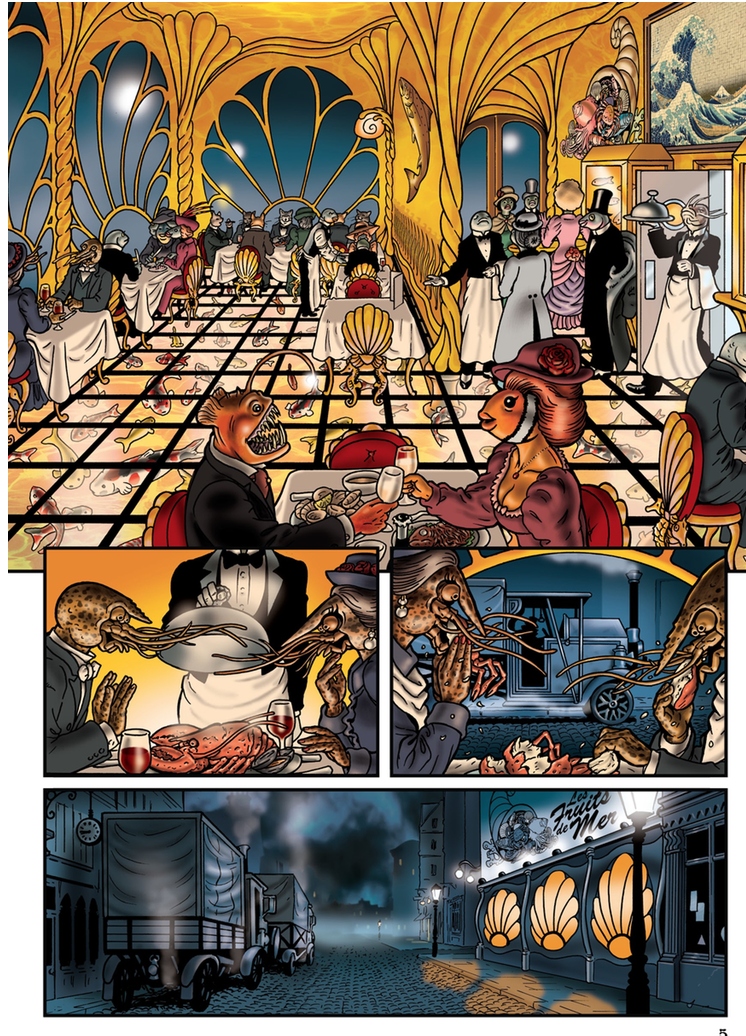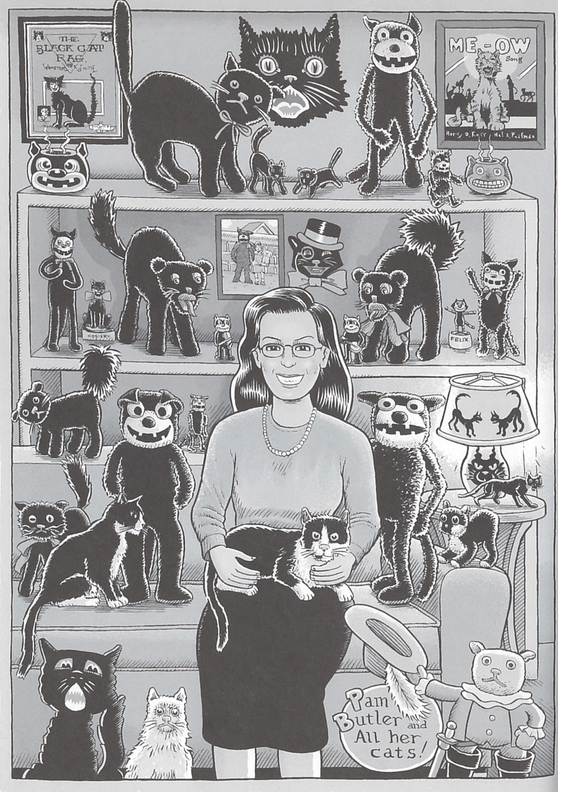For Whom is Embodying a Cultural Bridge a Mechanism of Oppression and Liberation?
Cummins’ reported motivations for authoring American Dirt further highlight the privileged position from which her novel was written and read. In explaining her decision to write American Dirt, Cummins has repeatedly claimed that she aimed to act as a “bridge,” presumably between Mexican migrants and an Anglo-American readership. For example, in the author’s note of American Dirt, Cummins claimed that she was “worried that, as a non-migrant and non-Mexican, I had no business writing a book set almost entirely in Mexico, set entirely among migrants”; however, she ultimately chose to write the book because “I thought, ‘If you’re a person who has the capacity to be a bridge, why not be a bridge?’” (p. 382). Additionally, in interviews addressing the controversy around American Dirt, Cummins has rearticulated this rhetoric, sharing that she wrote the novel with the hope that it “would be a bridge” (cited in Boyagoda, 2020). While Cummins’ efforts to serve as a cultural bridge have been commended by some of her supporters, putting her rhetoric in conversation with Moraga & Anzaldúa’s (1981; 1983) Bridge highlights the damaging effects and distance from which Cummins wrote about and aimed to “bridge” her subjects and readers.
As the anthology’s title signals, Bridge (1981; 1983) interrogates and reimagines the bridges that have historically been built along the backs of women of color by those with varying levels of privilege and power (including, but not limited to, white men and women) in their attempts to explore and understand those situated as “Other.” Presented in the opening of the anthology, “The Bridge Poem”—penned by acclaimed Black poet Kate Rushin—highlights the burdens that embodying a bridge imposes on Black women as they are expected to connect, educate, and translate across difference.Through this work, Rushin expresses her fatigue and frustrations as a bridge, declaring: “I've had enough / I'm sick of seeing and touching / Both sides of things / Sick of being the damn bridge for everybody / …I'm sick of filling in your gaps / Sick of being your insurance against / The isolation of your self-imposed limitations” (Moraga & Anzaldúa, 1983, p. xxi). Bridge (1981; 1983) explores interventions in the building of these bridges, highlighting the liberatory power deployed when women of color develop their own bridges to one another: “bridges of consciousness” connecting them in solidarity (Moraga, 2015, p. xvi). As Moraga (2015) shares in the preface to the fourth edition of Bridge, the first edition (1981) of this anthology was the product of “women of color, who had been historically denied a shared political voice, endeavor[ing] to create bridges of consciousness through the exploration, in print, of their diverse classes, cultures and sexualities” (p. xvi). Thus, as Moraga & Anzaldúa (1983) claim, constructing these bridges of solidarity emerges through women of color “naming our selves and by telling our stories in our own words” (p. 23).
I argue that in authoring American Dirt—a work that is not rooted in her personal experiences with oppression or liberation, and a work not designed to connect herself to women of color in solidarity—Cummins, and her rhetoric around “bridging,” are ultimately, like the book itself, hollow and harmful. In authoring an apolitical and impersonal work, Cummins not only fails to construct the bridge of consciousness envisioned in Bridge, but reproduces the toxic notion that bridges between those with oppressive power and women of color must be constructed in order for the former to learn and comprehend the humanity of the latter. Further, Cummins appears unaware of where the burdens of her attempts to be or build a bridge fall. As Cummins (2020) reveals in American Dirt’s afterword, her novel was made possible by migrants and deportation victims who “patiently” taught her about things “I never would’ve understood without their insight” (p. 385). Therefore, while Cummins’ attempts to be a bridge may reflect a “social justice” ethos (Markowicz, 2020), she failed to build a bridge along her own back; instead, (re)constructing them on the backs of those who “patiently” taught, and translated for, her.
For Whom are Borderlands Stories Profitable?
Lastly, as many American Dirt critics have highlighted, Cummins’ success in selling American Dirt represents the inequities embedded within mainstream cultural production structures in the U.S. For example, responding to Cummins’ lamenting that “I wished someone slightly browner than me would write it,” other writers have reminded her that authors who are “browner” than her have written stories about their experiences (Grady, 2020a).However, many of those stories have not received the same visibility or capital; “authentic stories by Mexicanas and Chicanas are either passed over or published to significantly less fanfare (and for much less money)” than American Dirt (Bowles, 2020). Thus, as her critics suggest, Cummins’ early acclaim epitomizes the lack of equitable opportunities for Mexicanas and Chicanas to tell and sell their own stories within present publishing structures in the U.S.
Indeed, as many writers of color have discussed, the U.S. publishing industry has sustained a “historic and systemic whiteness” (Ho, 2016), with industry gatekeeping positions dominated by cis-het, able-bodied white women. As a survey by Lee & Low Books (2020) revealed, as of 2019, 76% of literary agents and publishing and review journal employees working in the U.S. were white, while only 6% identified as “Hispanic/Latino/Mexican.” Further, the majority of Black, Indigenous, and people of color (BIPOC) folks represented in publishing houses hold positions with little to no gatekeeping power, constituting nearly half of interns (49%), while remaining chiefly excluded from executive (22%), editorial (15%), and marketing and publicity (26%) positions (Lee & Low Books, 2020).
These substantial inequities in publishing power consistently produce a lack of opportunities for authors of color to publish and sell their work. As established publishing industry professionals have asserted, addressing inequities within the industry requires addressing representation in all gatekeeping positions, not simply seeking out “diverse” authors (Ho, 2016). For example, according to accomplished editor Sulay Hernandez, “the majority of books that are published in the US are not by people of color. The majority of high-profile authors are not people of color,” but changes need to be made to not only ensure that “more voices of color [are] being published” but that “more voices of color [are] being published well. And, very importantly, selling well” (cited in Masad, 2016). Thus, disrupting publishing industry inequities requires addressing the dearth of employees of color in all gatekeeping positions, with a particular focus on marketing and publicity, as these divisions substantially determine authors’ ability to sell their work (Ho, 2016).
Thus, with Latinxs and Mexicans occupying only 5% of marketing and publicity positions in the U.S. (Lee & Low Books, 2020), Mexican, Latinx, and Chicanx writers must fight to market themselves, and get stores to sell, and readers to buy, stories that may be considered marginal or “niche.” As Marcela Landres claims, the lack of Latinxs in “key” publishing positions is a primary contributor to the “paucity of published books written by Latinos” (cited in Cubias, 2015). And as Bowles (2020) shares, he has “seen my Chicana and Mexicana colleagues struggle to get their stories told, to get their manuscripts into the hands of agents and past the publishing industry’s gatekeepers;” thus, they remain “horribly underpaid” and “suffer marginalization in the US market.”
Meanwhile, Cummins received a million-dollar advance from Flatiron Books for the rights to American Dirt, a film production deal with Imperative Entertainment, and enjoyed substantially effective pre-release publicity and marketing. Despite the widespread backlash that the novel received after its publication, American Dirt’s sales continued to grow to over 362,000 copies by July of 2020 (Milliot, 2020), and maintained a place on the New York Timesbest-sellers list for twenty-six weeks straight. I argue that this success further demonstrates the privileges that Cummins was afforded in telling and selling this story. Unlike so many women of color striving to publish their own stories, Cummins was not rejected or silenced by dominant publishing structures, was not “horribly underpaid,” and did not struggle to have the story she told marketed and sold well.
Conclusion
Ultimately, I posit that critiques of American Dirt must be guided by a politics of authorship that recognizes the inequities represented by, and reproduced through, Cummins’success in telling and selling this story. Engaging with work fromMoraga (1983; 2015), Anzaldúa (1983; 1987), Moraga & Anzaldúa (1983), and Hurtado (2020), and examining the broader sociocultural and political economic contexts in which American Dirt was produced and published, reminds us that women writers of color contend with mechanisms that silence and delegitimize their storytelling, have historically been tasked with serving as cultural bridges, and are consistently denied opportunities to tell and sell their own stories in the U.S. publishing industry. Thus, while Cummins has now publicly claimed her identity as a Latina, I argue that as the author of American Dirt, she was ultimately read and afforded the same privileges as a white writer.
But American Dirt as a phenomenon speaks beyond one particular story and storyteller; it reflects, and has helped reify, a publishing system that privileges and perpetuates whiteness. This is particularly evinced by the success with which Cummins was able to tell and sell a story filled with harmful, stereotypical portrayals of Mexicans and migrants, whichwere unquestioned by publishers but quickly recognized and critiqued by Mexican and Chicanx writers and readers. Further, as reflected in Cummins’ representations of, and rhetoric around, “brownness,” Black and Afro-Latinx writers and immigrants are erased from Cummins’ conceptions of authorship and immigration respectively—contributing to the continued exclusion of Black immigrants from narratives about the United States’ southern border and the atrocities afflicted by its Immigration and Customs Enforcement (ICE). Thus, Cummins not only benefits from the whiteness of the U.S. publishing industry, but simultaneously reinforces the anti-black racism and nativism pervading narratives about immigration in the United States writ large.
So what does this mean for other authors and scholars writing in the U.S. publishing industries or academia? To address (note: not answer) this question requires that I interrogate my own power and privilege. While I am highly critical of Cummins, hearing her trepidations about authoring American Dirt—“I don’t know if I’m the right person to tell this story” (Alter, 2020)—sunk like a rock in my own chest; I know these fears, they flood my mind with every research project that I pursue. Like Moraga (1983) in her piece “La Güera,” I find myself asking: as a white Chicana, “what is my responsibility to my roots—both white and brown, Spanish-speaking and English?” (p. 34), and what does it mean for me to claim the label of woman of color? Like Moraga, I recognize that I have to “look critically at my claim to color” and “must acknowledge the fact that, physically, I have had a choice about making that claim, in contrast to women who have not had such a choice, and have been abused for their color” (p. 33–34). Thus, I offer the following considerations:
To writers who are looking to tell stories with or about communities of color, but have—like myself—benefited from whiteness: Interrogate your power and privileges, and situate this in your own work; rejecthetero-masculinist tendencies to feign objectivity through distance.Seek out silenced storytellers—versus stories—and give them your ears, your heart, and your platform. Listen to, celebrate, and honor them. And ask not just “who am I to tell these stories?” but “who am I to hear them?” We are not entitled to their knowledge, their stories, their perspectives; they are not yours, nor mine to hold in my güera hands or heart.
And so I write this for the mujeres de color
escribiendo sobre su esperanza y su enojo, su alegría y su dolor
Proclaiming with tongue and heart, key and pen
voces que otras no quieren oír, realidades que no ven.
Olivia González is a doctoral student at the USC Annenberg School for Communication and Journalism and a former Ronald E. McNair scholar. Working at the intersections of critical media industry studies and education studies, Olivia’s research examines the politics of race and gender within contemporary structures of media education and production. Her current work and dissertation center on the storytelling practices and professional socialization of aspiring film and television creators of color.
References
Alter, A. (2020, January 13). Writing about the border crisis, hoping to break down walls. The
New York Times. Retrieved from https://www.nytimes.com/2020/01/13/books/jeanine-cummins-american-dirt.html
Anzaldúa, G. (1987). Borderlands/la frontera: The new mestiza.San Francisco, CA: Aunt Lute
Books.
Anzaldúa, G. (1983). Speaking in tongues: A letter to third world women writers. In C. Moraga
& G. Anzaldúa (Eds.), This bridge called my back: Writings by radical women of
color(2nd ed., pp. 165–173). New York, NY: Kitchen Table: Women of Color Press.
Arce, J. (2020, January 29). “American Dirt” tries to pretend that immigration isn’t political.
Buzzfeed News. Retrieved from https://www.buzzfeednews.com/article/julissaarce/american-dirt-jeanine-cummins-immigration
Associated Press. (2020, March 4). Oprah Winfrey tackles 'American dirt' book club controversy
with author for Apple TV+. The Hollywood Reporter. Retrieved from https://www.hollywoodreporter.com/news/oprah-winfrey-tackles-book-club-controversy-american-dirt-author-apple-tv-1282571
Bermudez, E. [BermudezWrites]. (2020a, January 20). American Dirt has left us with a textbook
example of nearly everything we should avoid when writing about immigrants. It’s hollow, harmful; an adrenaline-packed cartoon. Still, reviewers, with one eye blind & the other missing, are calling THIS the “Grapes of Wrath of our time”. [Tweet]. Retrieved from https://twitter.com/BermudezWrites/status/1219266140989353991
Bermudez, E. [BermudezWrites]. (2020b, January 20). What I do see: A book industry that’s so
out of touch—that so rarely supports immigrants to tell our own stories—eager to make money off of our suffering with a cheap, stereotypical thrill. #ImNotAmericanDirt. Neither is any immigrant I’ve known in 17 years of journalism. [Tweet]. Retrieved from https://twitter.com/BermudezWrites/status/1219262784694697984
Blake, S. (n.d.). Review of American Dirt. Retrieved from
https://us.macmillan.com/books/9781250209764
Bowles, D. (2020, January 18). Cummins’ non-Mexican crap. Retrieved from
https://medium.com/@davidbowles/non-mexican-crap-ff3b48a873b5
Boyagoda, R. (2020, January 30). The American Dirt controversy is painfully intramural. The
Atlantic.Retrieved from https://www.theatlantic.com/ideas/archive/2020/01/american-dirt-controversy/605725/
Conroy, C. (2020, January 25). Jeanine Cummins: ‘I didn’t know if I had the right to tell the
story.’ The Irish Times. Retrieved from https://www.irishtimes.com/culture/books/jeanine-cummins-i-didn-t-know-if-i-had-the-right-to-tell-the-story-1.4138464
Cubias, D. (2015, April 21). Why aren’t more Latino authors being published? Huffpost.
Retrieved from https://www.huffpost.com/entry/why-arent-more-latino-authors-being-published_b_7112612
Cummins, J. (2020). American Dirt. New York, NY: Flatiron Books.
Cummins, J. (2015). Murder isn’t black or white. The New York Times. Retrieved from
https://www.nytimes.com/2016/01/03/opinion/sunday/murder-isnt-black-or-white.html
Grady, C. (2020a, January 30). The controversy over the new immigration novel American Dirt,
explained. Vox. Retrieved from https://www.vox.com/culture/2020/1/22/21075629/american-dirt-controversy-explained-jeanine-cummins-oprah-flatiron
Grady, C. (2020b, January 29). American Dirt’s publisher cancels the rest of the book’s tour,
citing threats. Vox. Retrieved from https://www.vox.com/culture/2020/1/29/21114167/american-dirt-book-tour-canceled
Greenblatt, L. (n.d.). Review of American Dirt. Retrieved from
https://us.macmillan.com/books/9781250209764
Grisham, J. (n.d.). Review of American Dirt. Retrieved from
https://us.macmillan.com/books/9781250209764
Gurba, M. (2019, December 12). Pendeja, you ain’t Steinbeck: My bronca with fake-ass
social justice literature. Tropics of Meta. Retrieved from https://tropicsofmeta.com/2019/12/12/pendeja-you-aint-steinbeck-my-bronca-with-fake-ass-social-justice-literature/
Hannah, K. (n.d.). Review of American Dirt. Retrieved from
https://us.macmillan.com/books/9781250209764
Ho, J. (2016, August 9). Diversity in book publishing isn't just about writers — marketing
matters, too. NPR. Retrieved from https://www.npr.org/sections/codeswitch/2016/08/09/483875698/diversity-in-book-publishing-isnt-just-about-writers-marketing-matters-too
Hurtado, A. (2020). Intersectional Chicana feminisms: Sitios y lenguas. Tucson, AZ:
University of Arizona Press.
Julia. (2020, January 30). Re: Pendeja, you ain’t Steinbeck: My bronca with fake-ass
social justice literature [Blog comment]. Retrieved fromhttps://tropicsofmeta.com/2019/12/12/pendeja-you-aint-steinbeck-my-bronca-with-fake-ass-social-justice-literature/#comment-53524
King, S. (n.d.). Review of American Dirt. Retrieved from
https://us.macmillan.com/books/9781250209764
Lee & Low Books. (2020, January 28). Where is the diversity in publishing? The 2019 diversity
baseline survey results. Retrieved from https://blog.leeandlow.com/2020/01/28/2019diversitybaselinesurvey/
Leftbanker. (2020, January 23). Re: Pendeja, you ain’t Steinbeck: My bronca with fake-ass
social justice literature [Blog comment]. Retrieved from
https://tropicsofmeta.com/2019/12/12/pendeja-you-aint-steinbeck-my-bronca-with-fake-ass-social-justice-literature/#comment-53524
Luiselli, V. (2019). Lost children archive. New York, NY: Penguin Random House.
Malone, T. (n.d.). Review of American Dirt. Retrieved from
https://us.macmillan.com/books/9781250209764
Markowicz, K. (2020, February 2).Ridiculous attacks on ‘American Dirt’ are fresh reason
to nix ‘cancel culture’. The New York Post. Retrieved from https://nypost.com/2020/02/02/ridiculous-attacks-on-american-dirt-are-fresh-reason-to-nix-cancel-culture/
Martin, R. (2020, January 24). 'American Dirt' author Jeanine Cummins answers vocal
critics. NPR. Retrieved fromhttps://www.npr.org/2020/01/24/799164276/american-dirt-author-jeanine-cummins-answers-vocal-critics
Masad, I. (2016, April 18). Read between the racism: The serious lack of diversity in book
publishing.VICE. Retrieved from https://www.vice.com/en_us/article/9aex3p/read-between-the-racism-the-serious-lack-of-diversity-in-book-publishing
McGinty, P. (n.d.). Review of American Dirt. Retrieved from
https://us.macmillan.com/books/9781250209764
Milliot, K. (2020, July 10). Print units post surprising increase in first half of 2020. Publishers
Weekly. Retrieved from https://www.publishersweekly.com/pw/by-topic/industry-news/bookselling/article/83829-print-units-post-surprising-increase-in-first-half-of-2020.html
Moraga, C. (1983). La güera. In C. Moraga & G. Anzaldúa (Eds.), This bridge called my back:
Writings by radical women of color(2nd ed., pp. 27–34). New York, NY: Kitchen Table: Women of Color Press.
Moraga, C. (2015). Catching fire: Preface to the fourth edition. In C. Moraga & G. Anzaldúa
(Eds.), This bridge called my back: Writings by radical women of color(4th ed., pp. xv–xxvi). New York, NY: Kitchen Table: Women of Color Press.
Moraga, C. & Anzaldúa, G. (2015). This bridge called my back: Writings by radical women of
color. Albany, NY: State University of New York Press.
Moraga, C. & Anzaldúa, G. (1983). This bridge called my back: Writings by radical women of
color. New York, NY: Kitchen Table: Women of Color Press.
Moraga, C. & Anzaldúa, G. (1981). This bridge called my back: Writings by radical women of
color. Watertown, MA: Persephone Press.
Moreno, E. (2019, December 14). Re: Pendeja, you ain’t Steinbeck: My bronca with fake-ass
social justice literature [Blog comment]. Retrieved from https://tropicsofmeta.com/2019/12/12/pendeja-you-aint-steinbeck-my-bronca-with-fake-ass-social-justice-literature/#comment-53524
Nielsen. (2011, May 20). The Oprah effect: Closing the book on Oprah’s book club. Retrieved
fromhttps://www.nielsen.com/us/en/insights/article/2011/the-oprah-effect-closing-the-book-on-oprahs-book-club/
oprahsbookclub. (2020, January 21). Our next book club selection is “American
Dirt” by @jeaningcummins. It’s a heart-wrenching page-turner, and you won’t be abel to put it down. Download your copy on @applebooks and #ReadWithUs: apple.co/americandirt #AmericanDirt @Glatiron Books @Oprah. [Tweet]. Retrieved from https://twitter.com/oprahsbookclub/status/1219620561086631937?lang=en
Oprah Magazine. (2020, March 4). Oprah discusses American dirt controversy with
author Jeanine Cummins. Oprah Magazine. Retrieved from https://www.oprahmag.com/entertainment/books/a31227918/oprah-american-dirt-jeanine-cummins-controversy-video/
Pablo. (2020, January 22). Re: Pendeja, you ain’t Steinbeck: My bronca with fake-ass
social justice literature [Blog comment]. Retrieved from https://tropicsofmeta.com/2019/12/12/pendeja-you-aint-steinbeck-my-bronca-with-fake-ass-social-justice-literature/#comment-53524
Pineda, D. (2020a, January 29). As the ‘American Dirt’ backlash ramps up, Sandra Cisneros
doubles down on her support. Los Angeles Times. Retrieved from https://www.latimes.com/entertainment-arts/books/story/2020-01-29/sandra-cisneros-breaks-silence-american-dirt
Pineda, D. (2020b, February 12). #DignidadLiteraria invites Oprah ‘on a mission to repair’ after
‘American Dirt’ fracas. Los Angeles Times. Retrieved from https://www.latimes.com/entertainment-arts/books/story/2020-02-12/dignidadliteraria-pens-a-letter-to-oprah-winfrey
Reichard, R. (2020, January 30). Sandra Cisneroes calls critics of highly controversial ‘American
Dirt’ novel “exeagerados.” Remezcla. Retrieved from https://remezcla.com/culture/sandra-cisneros-calls-critics-american-dirt-exagerados/
Rodriguez, J. (2020). Why American Dirt matters to all of us. Lunch Ticket. Retrieved from
https://lunchticket.org/why-american-dirt-matters-to-all-of-us/
Sehgal, P. (2020, January 17). A mother and son, fleeing for their lives over treacherous terrain.
The New York Times. Retrieved from https://www.nytimes.com/2020/01/17/books/review-american-dirt-jeanine-cummins.html
Toto, C. (2020, February 30). American Dirt: 'Cancel culture' embraces book burning in
the digital age. The Hill. Retrieved from https://thehill.com/opinion/technology/481147-american-dirt-cancel-culture-embraces-book-burning-in-the-digital-age
Tyrer, J. (2020, February 28).Re: Pendeja, you ain’t Steinbeck: My bronca with fake-ass
social justice literature [Blog comment]. Retrieved fromhttps://tropicsofmeta.com/2019/12/12/pendeja-you-aint-steinbeck-my-bronca-with-fake-ass-social-justice-literature/#comment-53524
Varela, J. R. (2020, February 2). 'American Dirt' is a bestseller because it reflects guilty liberals'
quiet beliefs about migrants. NBC News. Retrieved from https://www.nbcnews.com/think/opinion/american-dirt-bestseller-because-it-reflects-guilty-liberals-quiet-beliefs-ncna1127366
Von Essen, L. R. [reading_while]. (2020, January 21). This is disappointing given how much of
the book community has spoken out against this novel's disingenuous portrayal of the immigrant experience. There are so many marginalized voices you could be lifting instead. [Tweet]. Retrieved from https://twitter.com/reading_while/status/1219657189641662464
Winfrey, O. [Oprah]. (2020, January 21). Like so many of us, I’ve read newspaper articles and
watched television news stories and seen movies about the plight of families looking for a better life, but this story changed the way I see what it means to be a migrant in a whole new way. [Tweet]. Retrieved from https://twitter.com/Oprah/status/1219618257411493890
Wood, J. (2019, January 28). Writingabout writing about the border crisis. The New Yorker.
retrieved fromhttps://www.newyorker.com/magazine/2019/02/04/writing-about-writing-about-the-border-crisis






